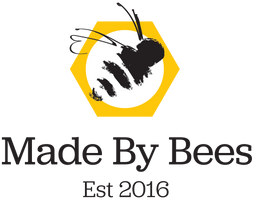A lot of work goes into a jar of honey. To learn more, we asked Priscilla Everett, a Brockville-based beekeeper and owner of Made by Bees, for an inside look at the wonderful world of bees.
 Why do bees make honey?
Why do bees make honey?
To have a source of food in the cooler months when they're unable to forage for nectar and pollen. Due to its acidity and low moisture content, honey keeps indefinitely.
How many bees does it take it to make a jar of honey?
A single female worker bee produces 1/12 tsp of honey during her lifetime. They average yield of a well-managed, mature hive in Ontario—roughly 70,000 bees—is 80 to 100lbs of honey per season.
How do local flowers affect the colour and flavour of honey?
In Ontario, bees feed upon flowers including clover, alfalfa, buckwheat, goldenrod and basswood. In general, light-coloured and mild-tasting honey is harvested early in the season when they are feeding on things like clover. As the season progresses, the colour deepens and the flavour becomes bolder and stronger.
Buckwheat honey is quite strong. What can you use it for?
Buckwheat honey is dark like molasses and rich in taste with a distinctive malty flavour. It's great in baked goods and makes an especially tasty barbecue sauce.
What is beeswax and what are its uses?
Beeswax is secreted by young worker bees; they chew and shape it to create hexagonal honeycomb cells then cap the cells with wax once they're filled with honey. When a beekeeper harvests honey, the caps are removed and filtered to make beeswax. It's used for candles, crayons, cosmetics, polishes, conditioners and reusable food wraps.
How important are bees to our world?
Honeybees pollinate a third of the crops we eat, including tree nuts, stone fruit and many other fruits and vegetables. In Ontario alone, bees are responsible for $170-million worth of crops each year.
This article was originally featured in the summer issue of LCBO Food & Drink and can be found here.
This article was originally featured in the summer issue of LCBO Food & Drink and can be found here.
